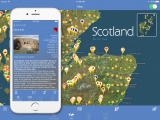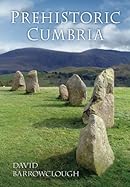<< Text Pages >> Fenstanton Cursus - Cursus in England in Cambridgeshire
Submitted by EssexMan on Monday, 02 August 2010 Page Views: 6855
Neolithic and Bronze AgeSite Name: Fenstanton CursusCountry: England County: Cambridgeshire Type: Cursus
Nearest Town: Huntingdon Nearest Village: Fenstanton
Map Ref: TL326689 Landranger Map Number: 153
Latitude: 52.302221N Longitude: 0.056741W
Condition:
| 5 | Perfect |
| 4 | Almost Perfect |
| 3 | Reasonable but with some damage |
| 2 | Ruined but still recognisable as an ancient site |
| 1 | Pretty much destroyed, possibly visible as crop marks |
| 0 | No data. |
| -1 | Completely destroyed |
| 5 | Superb |
| 4 | Good |
| 3 | Ordinary |
| 2 | Not Good |
| 1 | Awful |
| 0 | No data. |
| 5 | Can be driven to, probably with disabled access |
| 4 | Short walk on a footpath |
| 3 | Requiring a bit more of a walk |
| 2 | A long walk |
| 1 | In the middle of nowhere, a nightmare to find |
| 0 | No data. |
| 5 | co-ordinates taken by GPS or official recorded co-ordinates |
| 4 | co-ordinates scaled from a detailed map |
| 3 | co-ordinates scaled from a bad map |
| 2 | co-ordinates of the nearest village |
| 1 | co-ordinates of the nearest town |
| 0 | no data |
Internal Links:
External Links:
Cursus in Cambridgeshire
[Article about exciting Rock Art doodle added to this page to show background of other possible neolithic activity in the immediate area - MegP Ed]
Status: Possible
NMR No. TL 36 NW 56
Note: Neolithic Doodle Rock Art found in quarry near village of Over, Cambridgeshire
You may be viewing yesterday's version of this page. To see the most up to date information please register for a free account.
Do not use the above information on other web sites or publications without permission of the contributor.
Nearby Images from Geograph Britain and Ireland:

©2018(licence)

©2021(licence)

©2018(licence)

©2014(licence)

©2018(licence)
The above images may not be of the site on this page, they are loaded from Geograph.
Please Submit an Image of this site or go out and take one for us!
Click here to see more info for this site
Nearby sites
Key: Red: member's photo, Blue: 3rd party photo, Yellow: other image, Green: no photo - please go there and take one, Grey: site destroyed
Download sites to:
KML (Google Earth)
GPX (GPS waypoints)
CSV (Garmin/Navman)
CSV (Excel)
To unlock full downloads you need to sign up as a Contributory Member. Otherwise downloads are limited to 50 sites.
Turn off the page maps and other distractions
Nearby sites listing. In the following links * = Image available
1.0km NE 48° Low Hill Bowl Barrow, Fen Drayton RSPB Reserve* Round Barrow(s) (TL33336960)
2.1km NNE 31° Holywell (Cambridgeshire)* Holy Well or Sacred Spring (TL336707)
4.2km SW 233° Hilton (Cambridgeshire)* Turf Maze (TL293663)
6.0km S 170° Knapwell* Holy Well or Sacred Spring (TL33816300)
7.3km WNW 288° Godmanchester Cursus Cursus (TL25557092)
7.3km WNW 288° Godmanchester Cursus Cursus (TL25557092)
8.3km ESE 113° St Michael's Well (Cambridge)* Holy Well or Sacred Spring (TL40326584)
8.7km SW 224° Nill Well* Holy Well or Sacred Spring (TL26786248)
9.1km WNW 291° Horse Common Spring* Holy Well or Sacred Spring (TL2472)
9.8km ENE 63° Haddenham Enclosure Causewayed Enclosure (TL412736)
9.9km E 83° Belsar's Hill* Hillfort (TL424703)
11.6km W 259° Buckden A Cursus Cursus (TL212664)
12.2km NE 52° Haddenham Long Barrow (TL420767)
12.4km WNW 284° Brampton Long Barrow (TL204715)
12.5km W 261° Buckden B Cursus Cursus (TL20266659)
12.6km WNW 284° Brampton Cursus Cursus (TL203716)
12.6km W 260° Buckden C Cursus Cursus (TL202664)
14.0km SSE 160° The Mazles Turf Maze (TL377559)
15.4km NE 51° Sutton in the Isle Round Barrow Round Barrow(s) (TL443790)
16.4km SE 133° Cambridge Museum of Archaeology & Anthropology* Museum (TL450581)
16.5km SE 133° Cambridge Fitzwilliam Museum* Museum (TL44955790)
17.5km NW 311° Monk's Hole Barrow Round Barrow(s) (TL1896479957)
17.6km SW 235° Eynesbury Hardwicke B Cursus Cursus (TL184584)
17.9km SW 236° Eynesbury Hodwick 1 Long Barrow (TL180585)
18.0km SW 235° Eynesbury Hardwicke A Cursus Cursus (TL181582)
View more nearby sites and additional images






 We would like to know more about this location. Please feel free to add a brief description and any relevant information in your own language.
We would like to know more about this location. Please feel free to add a brief description and any relevant information in your own language. Wir möchten mehr über diese Stätte erfahren. Bitte zögern Sie nicht, eine kurze Beschreibung und relevante Informationen in Deutsch hinzuzufügen.
Wir möchten mehr über diese Stätte erfahren. Bitte zögern Sie nicht, eine kurze Beschreibung und relevante Informationen in Deutsch hinzuzufügen. Nous aimerions en savoir encore un peu sur les lieux. S'il vous plaît n'hesitez pas à ajouter une courte description et tous les renseignements pertinents dans votre propre langue.
Nous aimerions en savoir encore un peu sur les lieux. S'il vous plaît n'hesitez pas à ajouter une courte description et tous les renseignements pertinents dans votre propre langue. Quisieramos informarnos un poco más de las lugares. No dude en añadir una breve descripción y otros datos relevantes en su propio idioma.
Quisieramos informarnos un poco más de las lugares. No dude en añadir una breve descripción y otros datos relevantes en su propio idioma.